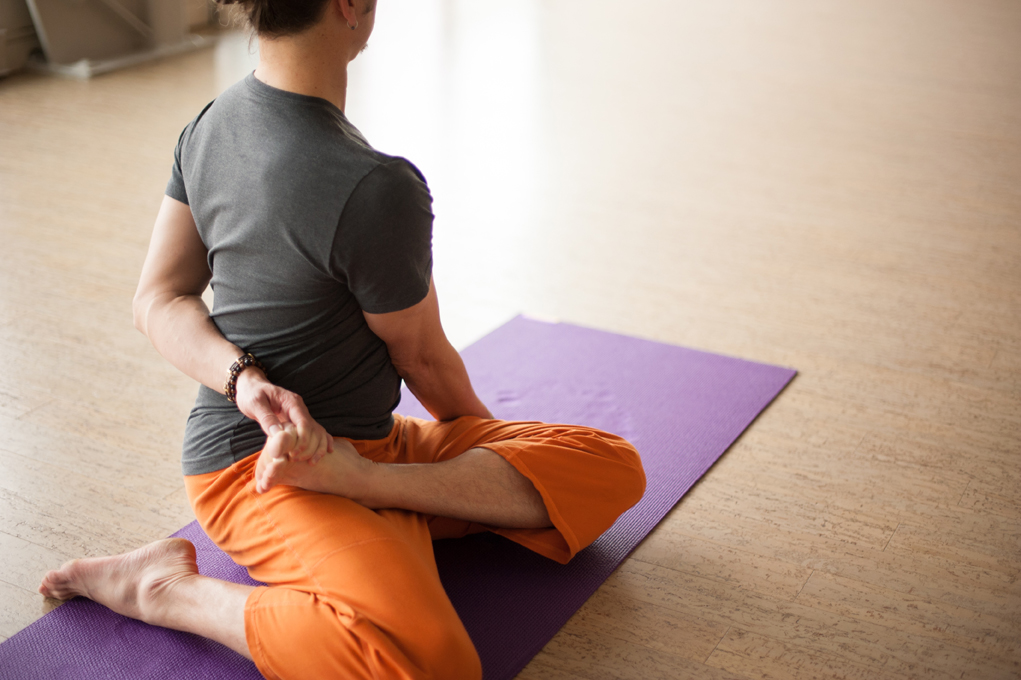
Lotus Pose (Padmasana) may be yoga asana’s most recognizable pose. But that doesn’t mean it’s easy or accessible to every body. Lotus Pose requires a whole lot of external rotation, more than many Western hip joints can muster.
Perhaps Lotus Pose became an asana icon because of the practice’s East Indian origins. My own completely anecdotal observation from time spent in India revealed that Indian hip joints appear to externally rotate much more easily and universally than those of my students in the U.S. Poses such as Baddha Konasana (Bound Angle Pose) and Padmasana looked effortless in Indian students.
A study by the Indian Journal of Orthopedics found that there are, indeed, evolutionary differences between Western and Eastern (South Indian) hip joints:
“The lifestyle and the social customs of the Indian population differ from that of the Western population. The hip joints of the Indian population would be evolutionally different from their Western counterparts since our population is more apt to floor level activities with increased external rotation of the hip.”
Even if Padmasana is less accessible to many people in the West, we can still practice its many variations. Parvrtta Ardha Padmasana (Revolved Half Lotus Pose) allows us to practice externally rotating our hip joints, while enjoying an invigorating spinal twist.
Spinal Rotation in Yoga Practice
Spinal rotation is one of yoga practice’s great gifts: we don’t often twist our spines in everyday life, even though our thoracic spines are designed to do this. Asana practice gives us the opportunity to keep our spines supple and mobile by encouraging all types of movement, including twisting.
Parvrtta Ardha Padmasana is a complicated pose. It’s important to warm up before you practice. Here are a few suggestions for warm-up poses:
- Uttanasana (Standing Forward Bend)
- Baddha Konasana (Bound Angle Pose)
- Supta Ardha Padmasana (Supine Half Lotus)
Practice with care—or don’t practice Parvrtta Ardha Padmasana at all—if you have knee or low back issues or intervertebral disc problems. Do not practice spinal twists in the first trimester of pregnancy. Gentle twisting, not to your limit, is okay in the later stages of pregnancy.
How to Practice Parvrtta Ardha Padmasana
Props: yoga mat, one or two firm yoga blankets or yoga bolster, yoga block (optional)
- Sit on a yoga mat with your legs stretched out in front of you.
- Bend your right knee so that the heel is next to your outer right hip (see photo).
- Cross your left leg over your right thigh. Flex your left ankle as you place it on top of your right upper thigh. Your ankle should be fully resting on the thigh to avoid overstretching your outer ankle, which can compromise both your knee and your ankle. If this just doesn’t work for you, place your lower leg on the floor and press your left foot into your right inner thigh.
- Now check your spine: Are your lumbar vertebrae poking out? If so, sit higher on a folded blanket or two, or on a yoga bolster.
- Rotate your torso toward the left leg, allowing your pelvis to twist in the direction of your rotating torso. This means that your left sit bone will move back as your right sit bone slides forward.
- Place your right hand on the outside of the left thigh. Be sure to allow the twist to come from the spine, rather than pulling yourself into it with your arms. Please don’t inflict the pose on your body!
- Place your left hand on the floor to help you lengthen your spine. If it doesn’t reach the floor, place your hand on a block.
- If your arms are long, you may be able to reach behind your back and grab your left foot with your left hand, as in the above photo. If that’s not happening for you, return your hand to the floor or to the block to help you keep your spine long.
- Take 5 to 10 deep breaths, allowing your body to oscillate in and out of the pose slightly as you exhale and inhale.
- Return to the center. Stretch your legs out on the floor in front of you and sit for a few breaths, letting the effects of the asana settle.
- Repeat on your other side.
